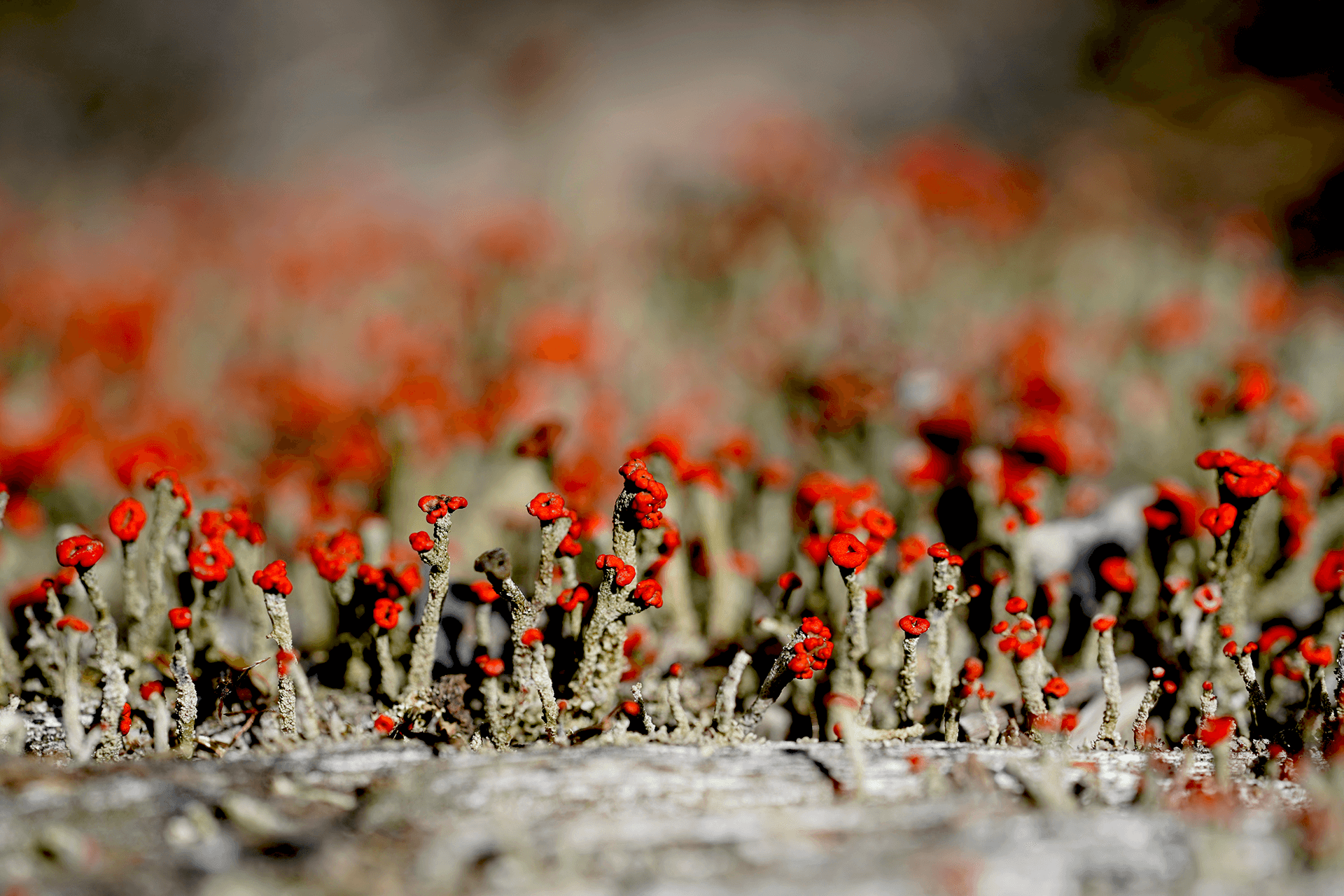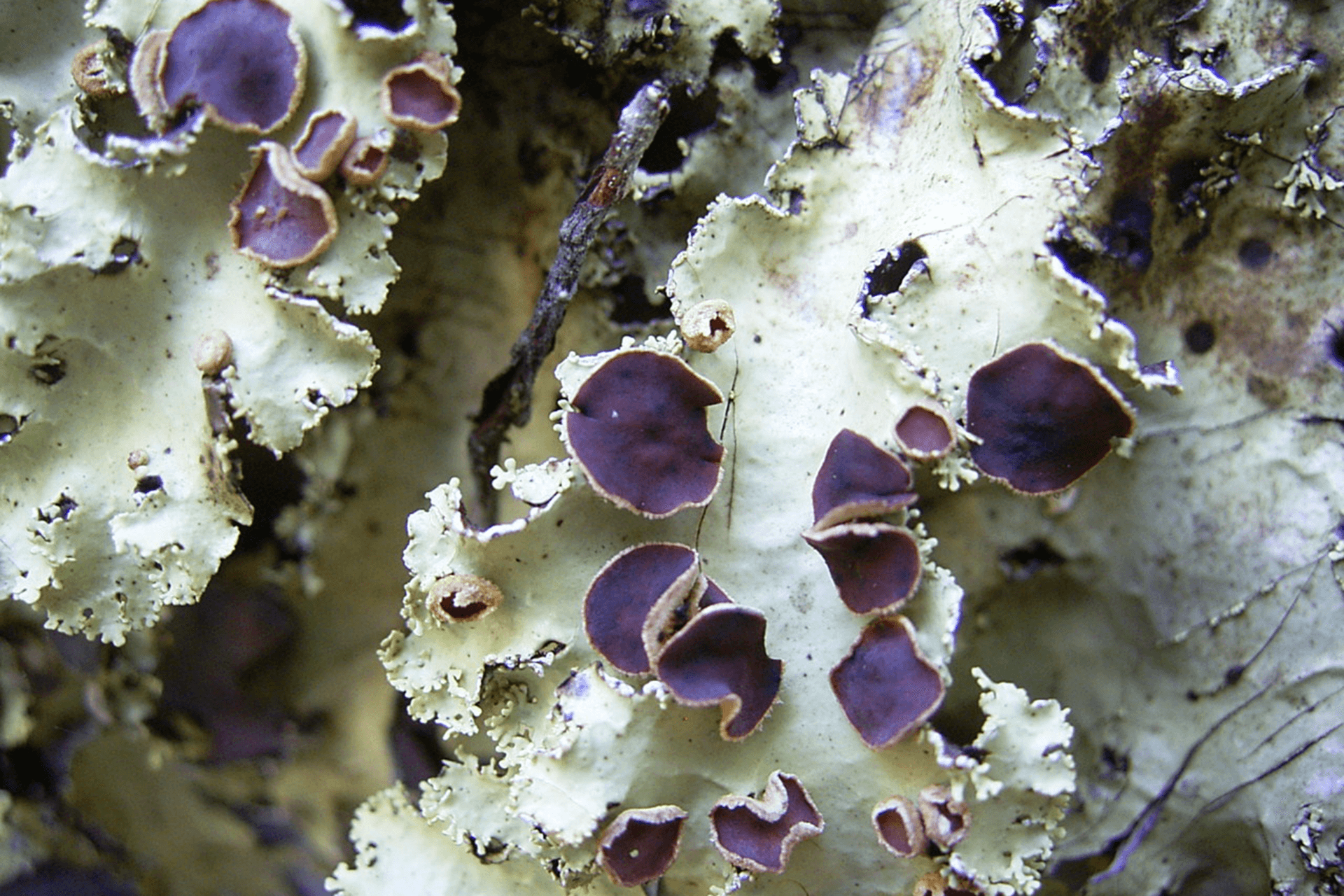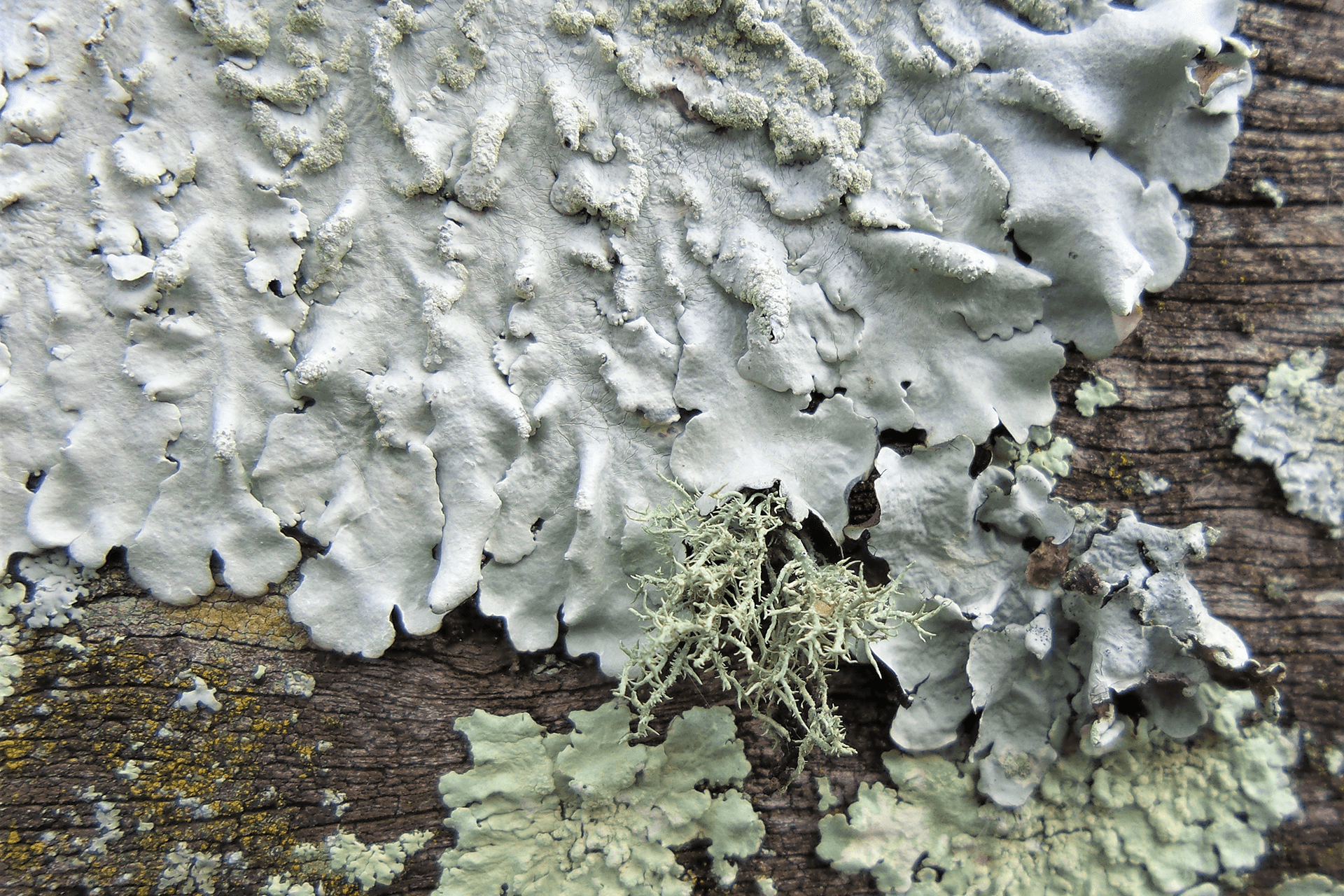The weird and wonderful world of lichens
There’s nothing else like lichen.
What looks like a small and inconspicuous plant is not a plant at all, but two or more organisms. Lichen is made up of a fungus and one or more algae or cyanobacteria, in a mutually beneficial symbiotic relationship. One partner, the algae or cyanobacteria, produces carbohydrates through photosynthesis. The fungus partner cannot photosynthesise – it gathers moisture and nutrients from the environment and anchors the lichen to a surface.

Lichens can come in many bright colours.
Together, lichens cover the world; over 20,000 species can be found on a wide range of natural and artificial surfaces from the poles to deserts. There are over 3,000 species just in Australia. We don’t know how many are in Sydney Olympic Park, but we know there are many lichens if you look.

Lichens come in many forms.
For an organism that doesn’t feature much in most people’s minds, lichens make an outsized contribution to the world. They wear away rocks, slowly creating soil. Creatures big and small eat lichen, from snails and caterpillars to reindeers especially in winter. They provide habitat to many invertebrates, and many birds line their nests with lichen, possibly for camouflage.
What’s most amazing of all, is that lichens have been around for over 400 million years. The oldest lichen, located in the Arctic, is estimated to be 8,600 years old!
There is much to appreciate and learn about lichens. Some are colourful and others are sculptural. Next time you’re out in nature, keep your eyes open for this unique organism!

A collage of lichens on a wooden post.